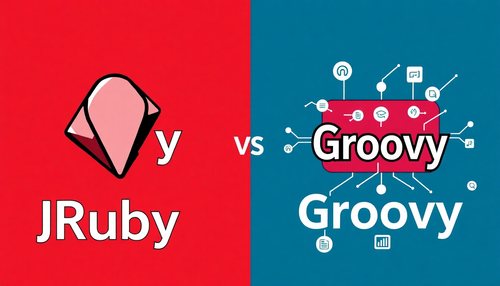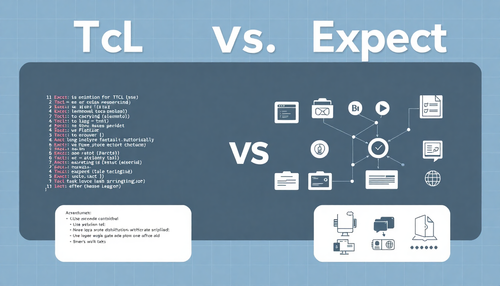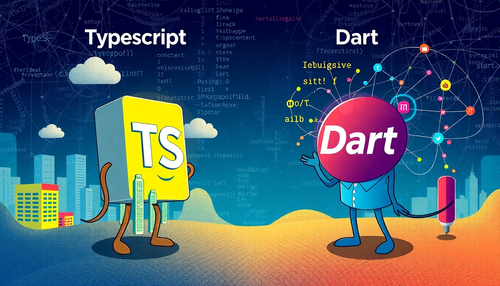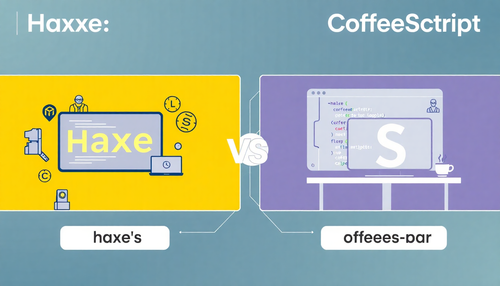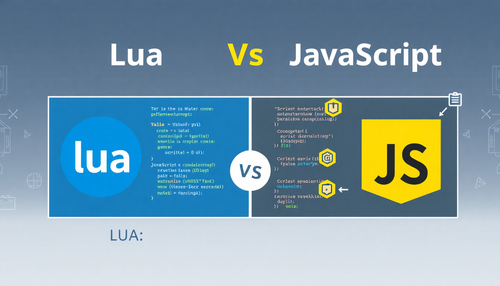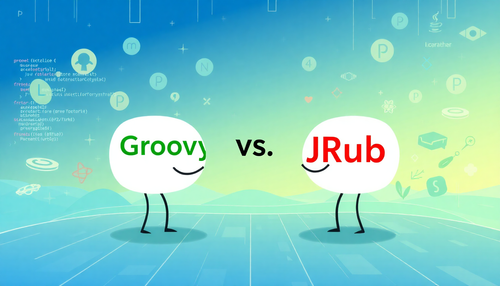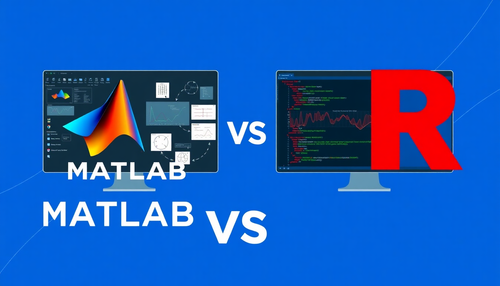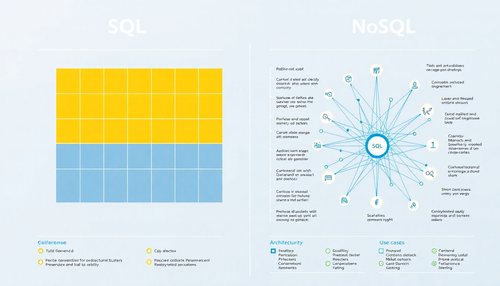Discover the definitive comparison between the pros and cons of in-house and outsourcing to make the best decision for your business growth and efficiency.

Before starting a new project, companies have a lot to consider. One of the most important decisions is whether to use an in-house or outsourced team for software development.
While in-house development involves using the skills of the in-house team to create software, outsourcing development involves working with a third-party company that will assemble a team of professionals according to the client's project needs.
Both practices have their advantages and disadvantages and require careful consideration. The right approach depends primarily on project requirements and company resources, but there are many other factors that business leaders should think about before making a decision.
When it is important to make the right choice
It is important to make the right choice whenever companies have a clear idea and vision for the intended product. Once business leaders fully understand the scope and requirements of the entire project and understand the resources available, it is time to consider the advantages and disadvantages of different scenarios.
In-house software development
Internal software development, or insourcing, refers to the formation of a team from scratch to create software within the contracting company, using its resources, without involving outsourced employees. Business leaders handle recruiting, interviewing, and onboarding candidates to fill required roles based on the skill sets and knowledge needed to complete the project internally.
Full-time in-house software developers typically have a fixed salary, insurance, benefits, retirement plans, and so on. While business leaders have direct control over them, they are also responsible for providing internal teams with everything they need to complete their tasks. This involves setting up office space and infrastructure with any necessary hardware and software.
Pros of In-House Team Members
Complete control
When business leaders hire in-house software developers, they have complete control over the development process. This direct access to the development team allows you to oversee the implementation of tasks, easily monitor progress, resolve issues, and adjust the development process at any time.
This level of control accommodates rigid processes and decision-making often necessary for companies that need to ensure their development processes meet specific standards and expectations.
Improved collaboration
In-house developers work together every day. As employees of a company, they fully understand the principles of your project and have a vested interest in its success. They typically do not face language barriers because they are usually from the same area. They benefit from direct communication, which is simpler and more direct.
Internal team members can discuss issues in person, which is particularly beneficial when finalizing project requirements. In-house software developers can also participate in corporate events and team-building activities to improve corporate culture.
Protecting Intellectual Property
Intellectual property (IP) recognizes a company as the creator of any invention, product or service. It is a valuable asset that companies must protect to increase their competitive advantage in the market.
By having all development stages internally, it is much easier to control and protect intellectual property, as there are no third parties involved. Still, companies need to take some security measures, such as implementing intellectual property rights, patents, trademarks and copyrights.
Cons of in-house development
High cost
In-house software development can put a strain on a company's budget and resources. The company not only covers competitive salaries, but also employee pensions, sick leave, vacation, insurance, ongoing training and taxes.
The recruitment process is grueling in itself. Adding to this is the fact that sometimes companies are unable to find IT specialists to fill specific team roles on their own. This means they must hire a recruitment agency, adding another expense to the process. Because in-house software developers are part of the company, business leaders need to provide them with constant work and pay them a steady salary, even when they are between projects.
Companies also need to take care of everything their in-house software development team needs in terms of infrastructure and tools such as laptop and software.
Limited talent pool
Many companies struggle to recruit locally due to a lack of available tech talent. Even if they have no problem finding a good number of candidates, it is always much more complicated to find a candidate with the right type of skills, experience and knowledge.
To quickly fill gaps in their teams, companies tend to hire the best candidates they can, even if they don't perfectly fit the project requirements. These candidates then need training to fully understand the scope of the project. They often deal with steep learning curves, delaying the entire endeavor.
Scaling Challenge
Scaling an internal team is a challenge, especially for companies that experience sudden growth or need to quickly adapt to new project requirements or market changes. Lengthy recruitment processes put a strain on existing teams and resources.
Both hiring and firing people take time. Companies that are unable to quickly scale up or down their teams end up facing inefficiencies and delays in the development process.
Software development outsourcing
Software development outsourcing involves delegating the software development process to a third-party company that can tap into a larger talent base with the knowledge and skills required for the project at hand.
Favored for its low cost and scalability, software development outsourcing entails a contractual agreement in which the client company provides detailed project requirements to the outsourcing vendor. Then, the outsourced team handles the entire software project or works together with the in-house team to complete the work.
Companies can work with outsourcing agencies locally (onshoring), in a neighboring country without significant time zone differences (IT nearshoring), or in distant countries (IT offshoring). They also decide the type of outsourcing model that best meets the project's needs. Companies can choose between outsourcing the entire development process, hiring a dedicated team or expanding the team.
Pros of outsourcing
Cost benefit
It is much more affordable to work with an outsourcing company, especially if they operate in a country where software developer salaries are considerably lower for the same level of expertise. This is typically the case for agencies located in Eastern Europe, Latin America and several Asian countries, for example.
With this operating model, companies do not need to worry about costs beyond those agreed with the supplier. In this situation, employee pensions, insurance, other benefits, and infrastructure costs are the responsibility of the IT outsourcing company, if they are provided.
Companies also save a lot of time and money in recruitment processes. Outsourcing providers offer their clients the opportunity to choose the right candidates from a pool of highly talented, pre-vetted professionals.
Access to a global talent pool
The development of outsourcing does not limit companies to a limited choice of local candidates, as the pool of available talent is not restricted by geographic location. Since most outsourced software developers work remotely, companies have access to the best experts in the world.
By working with outsourcing companies, business leaders no longer have to wade through piles of resumes to find the right talent for a software development project. They can choose from a list of experienced professionals who have a vast skill set and solid knowledge.
Scalability and flexibility
Outsourcing business models function as an on-demand service as clients can freely adjust their contract requirements depending on the changing needs of their projects. Many companies of all sizes turn to outsourcing because of its scalability and flexibility.
Business leaders can quickly increase the size of their outsourced team if they need to speed up the development process. They can also decrease the number of experts hired if necessary at any given time.
Cons of outsourcing
Less control
When working with an outsourcing vendor, especially in an end-to-end or full-cycle model, companies have less control over project development, progress, and troubleshooting. While this frees up business leaders and internal employees, allowing them to focus on core business functions, it also makes it a little more challenging to ensure adequate quality control that meets company standards.
The company cannot directly access the outsourced development team and it may take a while to receive an email response or find a good time for a meeting. This often results in communication gaps and can sometimes lead to misunderstandings or miscommunication, as well as potential delays.
Communication and Cultural Barriers
When working with an outsourced software development team, companies may also face cultural and communication barriers that can affect working relationships. This happens because clients often face professionals who do not speak the same language and work in different time zones.
Even if the outsourcing agency provides a project manager who understands and speaks the client's native language, there may be room for misunderstandings. Fortunately, it is possible to overcome these types of barriers by establishing appropriate communication channels and collaboration methods. This minimizes the number of possible inconveniences.
Intellectual property protection
When companies work with an outsourcing provider, they need to trust them with confidential company information and intellectual property. This raises security and privacy concerns, considering the risk of data leakage.
The first step to mitigating these risks involves choosing a reputable outsourcing partner with established security measures. Companies also need to create a contract that has clear regulations regarding internal data and potential leaks. To further protect themselves, business leaders should establish a non-disclosure agreement (NDA).
Making the Decision: In-House Versus Outsourcing
Business leaders need to take a few steps before making a decision between hiring in-house software developers or outsourcing project development. They should start by assessing the organization's needs, weighing the pros and cons, and considering implementing a hybrid approach.
Assessing your organization's needs
Assessing the organization's specific needs and objectives, as well as the project requirements and their nuances, is a big step in making a decision between internal hiring or outsourcing. Defining the project scope from the beginning makes it easier to consider factors such as budgets, timelines, and project complexity, which in turn will help business leaders make the right choice.
Larger projects that require dedicated resources for long periods of time may require in-house development. Still, project leaders may find that they need extra staff, in which case an outsourcing partner may be beneficial. On the other hand, one-off projects or simple short-term development tasks might be better off in the hands of an outsourcing provider.
As noted earlier, there is a substantial cost difference between hiring in-house developers and outsourcing software projects. It is best for companies to understand the budget they are working with for the project to determine what type of contracting best meets their needs and monetary limitations.
Weighing the pros and cons
The pros and cons of each model vary from company to company. To make the right decision when hiring, companies must make a detailed comparison of the advantages and disadvantages of both business models.
Making the right decision will ultimately lead you to creating high-quality products while reducing time to market, increasing efficiency, and improving productivity. On the other hand, the wrong decision can cause the company to lose time and money.
Implementing a hybrid approach
By combining elements of traditional in-house hiring and outsourcing in a hybrid approach, companies are able to leverage the strengths of both models.
For example, adopting a hybrid approach allows companies to decide that in-house staff will handle core business tasks while an outsourced team will handle other duties. Business leaders then have the opportunity to combine these hiring models at different stages of development to optimize the entire development process.
Companies should outsource functions where they lack experience and flexibility and keep their internal teams in charge of activities in which they excel and that give the company a strategic advantage in the market.
Managing outsourced software development projects
Once a company chooses to work with an outsourcing provider, after evaluating all the advantages and disadvantages of each model, they will need to create a strategy to efficiently manage outsourced software development projects.
To do this, they must establish clear communication channels, define the scope and results of the project and guarantee solid quality and safety protocols.
Establishing clear communication channels
Establishing clear communication channels helps outsourcing providers and their clients ensure they can work efficiently as one, avoiding any miscommunication and the feeling of loss of control over the development process.
Quality outsourcing providers work closely with their clients to establish communication channels that work well for them. Popular measures include implementing appropriate communication tools such as video conferencing, chat platforms and project management software.
Defining project scope and results
In certain situations, direct interactions between a company and its outsourcing provider are rare. The outsourced development team must have access to well-written and detailed project requirements to ensure project success and customer satisfaction.
Companies must create certain materials and documentation, including a request for proposal (RFP), a set of requirements, and product acceptance criteria. Both parties must then work together to review, negotiate and adjust any requirements before the supplier begins the development process.
Failing to properly define and manage project scope and deliverables can mean the failure of engagement between a company and its outsourcing vendor.
Ensuring Quality and Safety
Establishing and maintaining high quality and security standards in outsourced software development is extremely important for both the customer and the supplier. It is the only way to guarantee customer satisfaction and the supplier's reputation.
To ensure data security and privacy, companies can implement measures such as firewalls, encryption and access controls. Outsourcing providers must follow data protection standards and requirements, including GDPR and ISO 27001 .
Companies may attempt to mitigate certain risks through contracts and agreements. This helps manage expectations while protecting the client as well as the software development outsourcing provider. Popular terms in these settings include Service Level Agreements (SLAs) and NDAs.
Successful outsourcing also depends on maintaining code quality and meeting project timelines. Both parties must establish quality control mechanisms that include testing and reviewing the code to ensure it complies with the correct quality standards. Outsourced teams can also use project management tools and procedures to help track development, stay on top of emerging issues, and stay on top of project deadlines.
Conclusion
Both traditional in-house hiring and outsourced software development come with their own sets of pros and cons. Company leaders should take the time to weigh these advantages and disadvantages while considering factors such as budgets and timelines in order to choose the most effective hiring strategy for their business.
If you liked this article, be sure to check out some more articles about outsourcing.
- Why outsourcing is perfect for periods of economic uncertainty
- Top 7 Industries That Benefit From Software Outsourcing
- Why should startups outsource software development projects?
- Ensuring long-term success with post-project support in software outsourcing
Common questions
How can I decide between in-house and outsourced software development?
Companies need to evaluate their needs to be able to successfully decide between an in-house team and an outsourced software development team. This involves weighing important factors like budgets, schedules, and project complexity.
Team leaders must also evaluate in-house and outsourced pros and cons. The advantages of hiring in-house developers include complete control, enhanced collaboration, and intellectual property protection, while its disadvantages include higher cost, limited talent pool, and scaling challenges.
On the other hand, outsourcing software development brings advantages such as savings, access to a global talent pool, and scalability and flexibility. Its cons include less control, potential cultural and communication barriers, and less intellectual property protection.
What are the main advantages of in-house software development?
The main advantages of in-house software development include having full control over the development process, a greater sense of collaboration among team members, and greater control over intellectual property.
What are the main advantages of outsourcing software development?
The main advantages of outsourcing development include cost savings, access to a global talent pool, and the ability and flexibility to quickly scale up or down the development team depending on project requirements.
How can I overcome cultural and communication barriers in outsourced software development?
To overcome communicational and cultural barriers in outsourced software development, companies can implement some measures. Some of these include using project management tools, setting clear expectations, and promoting cultural understanding.
Other tips that can help your team overcome this type of barrier when working with an outsourced software development team include establishing communication channels and hiring only bilingual staff.
How can I protect intellectual property when outsourcing software development?
Protecting intellectual property when outsourcing software development is crucial for every company. Fortunately, there are many different methods that can ensure intellectual property protection.
First, the company needs to conduct thorough background research on potential outsourcing providers to know their authenticity and credibility. Reliable outsourcing providers have proven track records, portfolios, testimonials, and client references.
Outsourcing providers must follow data protection standards and requirements such as GDPR and ISO 27001. Other data security and privacy measures include establishing firewalls, encryption, and access controls. Another way to protect intellectual property when outsourcing software development involves mitigating risks through contracts and agreements. Companies should always try to sign contracts that include Service Level Agreements (SLAs) and non-disclosure agreements (NDAs).
Source: BairesDev





